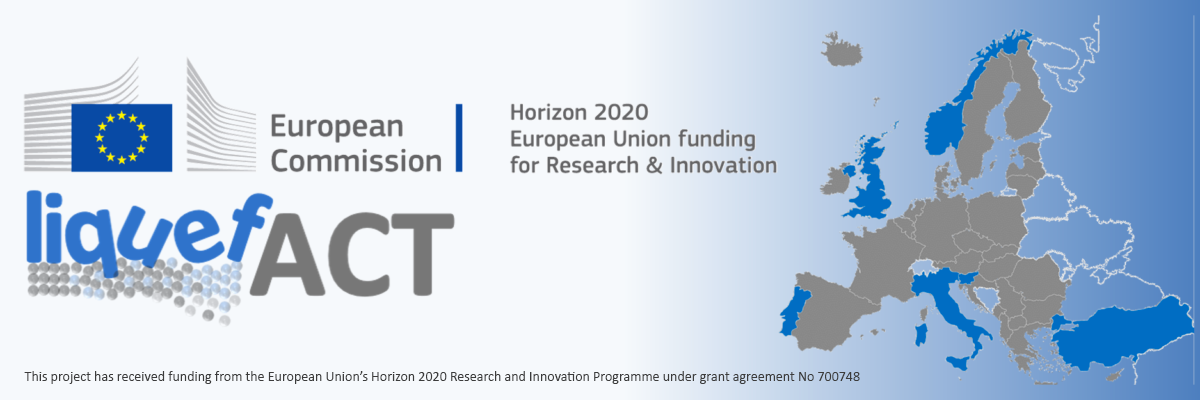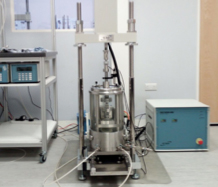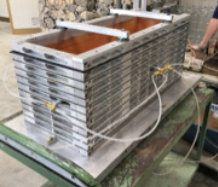University of Naples activities cover laboratory tests, centrifuge tests and numerical modelling. Laboratory tests have been carried out on soils treated with different liquefaction mitigation techniques: densification, induced low-desaturation and addition of nano-particles of laponite. The effectiveness of these techniques has been analysed by means of triaxial and shear tests (see Fig. 1) carried out on natural and treated specimens by applying different static and cyclic stress paths.
Small scale centrifuge testing programme (see Fig. 2) was performed by ISMGEO with the new Equivalent Shear Beam container (ESB) on different soil models (homogeneous and two layers deposits) to analyze two mitigation techniques in free-field condition: induced partially low desaturation and vertical drains.
Numerical modelling covered back-analysis of centrifuge tests: the constitutive models used for the soil have been calibrated on the basis of the results achieved from in-situ (performed by TREVI) and laboratory geotechnical tests as well as from geophysical prospecting. The numerical codes belong to the class of coupled u-p formulation to better capture the soil hydro-dynamical response under (different) earthquake loading, specifically the onset of pore water pressure build-up during shaking and their dissipation with time.
In the meantime, preparatory activities for the field trials in Pieve di Cento, Bologna area continue under TREVI; works are due to start in a few weeks.


